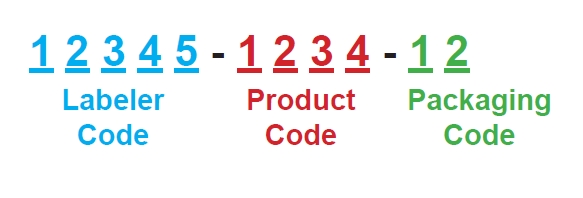
According to the Food and Drug Administration (FDA), drugs are identified and reported using a unique, three-segment number called the National Drug Code (NDC) which serves as the FDA’s identifier for drugs. FDA publishes the listed NDC numbers in the NDC Directory which is updated daily.
The NDC is configured into three segments:
- First Segment – Labeler Code identifies the company responsible for distributing the product in the United States. This portion of the code is assigned by the FDA.
- Second Segment – Product Code identifies the dosage, strength, and formulation of the drug. For example, a 400 mg acetaminophen tablet from the same manufacturer would be identified by the same product code in all its packaging. If a variation of this product was manufactured with a different component (e.g., 400 mg acetaminophen liquid capsule), it would receive a separate product code. This portion of the code is assigned by the manufacturer.
- Third Segment – Package code identifies the product container offered for sale. For example, a 10 bottle of tablets would have a different code than a 100 bottle of tablets. This portion of the code is assigned by the manufacturer.
A different NDC number indicates either a change in:
- Manufacturer
- Dosage, Strength, and Formulation of Drug
- Packaging
A drug product may have the same drug name and concentration on the label; however different NDCs may have different formulations.
When making compounded preparations from commercial products, it is important to compare the formulations of the commercial products with different NDCs to determine if the sterility method suitability and beyond use date established with one NDC can be applied to another. Sterility method suitability and beyond use date assignment are formulation specific. Changing commercial products may render your sterility method suitability and BUD assignment invalid.
